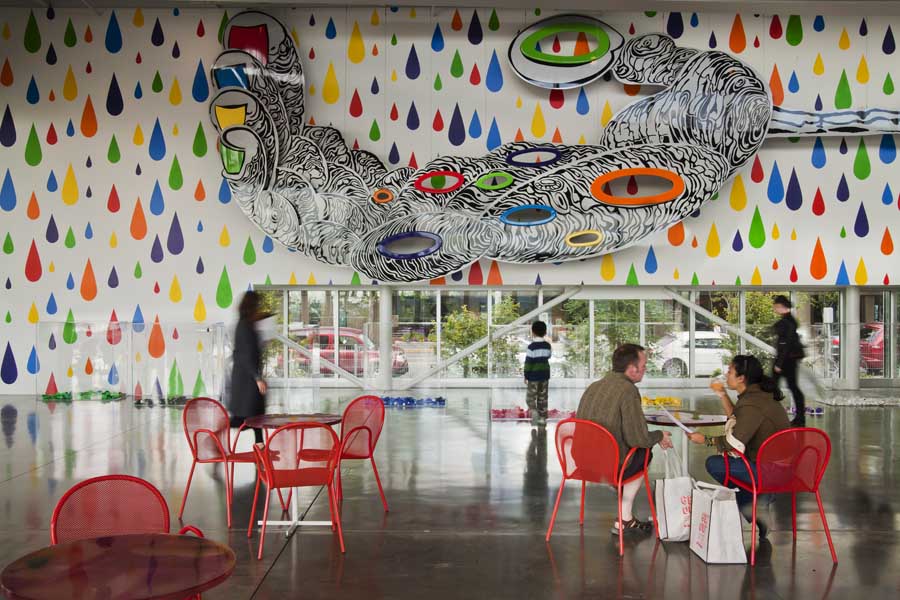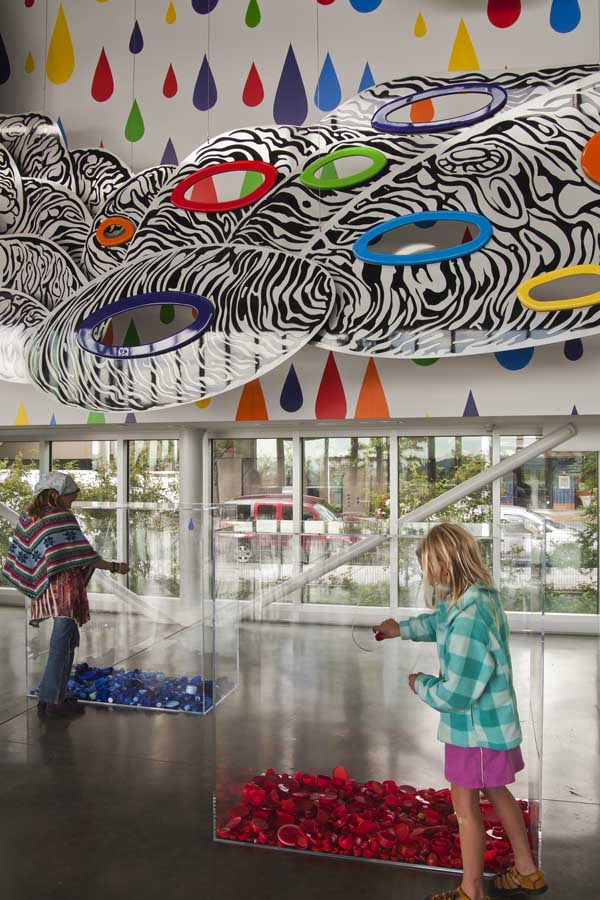
It would seem that the people of Seattle have just got themselves a key work in the development of Trenton Doyle Hancock's art.
In the past Hancock has gone about inventing his art in a way that I don't think I've encountered anywhere else. Faced with a rather narrow-minded ethos around media in art school (where he was cautioned always to be aware of the gulf of difference between painting and sculpture) he was delighted to come across multidisciplinarians like Martin Kippenberger. "These guys can get away with anything!" he remembers himself thinking. "They can make whatever they want. They can paint, they can sculpt, and nobody calls them on it. I want to be like that." But having made this breakthrough in terms of materials, the younger Hancock found that he needed what he calls a "filter" to lend some sort of coherence to his output. He found this in the example of comic book narratives, and simply wrote himself a story - focusing on two competing races of creatures, the Mounds and the Vegans - to guide the direction of his work. Again, Hancock recalls this in almost revelatory terms: "You mean it's that easy?" he asked himself. "I can just tell a story and have my paintings plug into it? It was absurd and stupid, but it just made sense, and ten years later I'm still doing it." Or perhaps he isn't, quite.
The title of Hancock's new installation, A Better Promise, and its imagery of a large outstretched hand and what he calls the "dumbed-down cartoon drops" that are painted on the gallery walls relate back to elements in his previous more narrative, specific art. So does his use of multicolored plastic bottle caps, but to be frank, whether or not you know anything about this will probably have little effect on how you see the new piece. "Ten years out from beginning the narrative," he explains, "I'm ready to change." It turns out that what he is contemplating is a change towards art that is less easily understood. "I'm really excited about a place where things are amorphous and un-pin-downable," he says, "and I feel like that's the place where my work is about to go." And he asks, "Whose hand is that? I don't know. Is it a community hand? I like that there's no answer."
It's my pleasure to report however that this new open-ended Trenton Doyle Hancock is still the maker of extremely accessible work, and in place of easy narrative, his new installation embraces a degree of audience participation that will no doubt make A Better Promise the delight of visiting school groups from all around the Pacific Northwest. Because those plastic bottle caps I mentioned? Hancock has been collecting them since he was a child, apparently, and now he's inviting visitors to the sculpture park to gather them up at home, and deposit them in large color-coded vitrines that make up the ground-level part of the work. It's a lovely touch.

The installation also has the vitality that can only come when an artist is genuinely discovering his art as he is making it. That Kippenberger-inspired leap into the multidisciplinary void that Hancock took all those years ago means that he has tried a whole range of things along the way - painting, sculpture, performance art, ballet, printmaking, and recently a 108-foot-long mural at the Dallas Cowboys' stadium. But he would be the first person to tell you that he is still learning. "If I said that I wasn't totally freaked out by the scale of all of this, I'd be lying," he admits engagingly, and he is fulsome in his praise of the Seattle-based fabricators who guided him through the making of A Better Promise. What this means is that the Olympic Sculpture Park is home to a beautiful new piece, full of wit and high spirits. As Hancock points out, "Seattle can be a dismal place sometimes," and he offers his multicolored piece as a happy antidote to that. In my opinion Seattleites should be grateful.